#Celtic Stone
Explore tagged Tumblr posts
Text



St Madoe's Stone , Perth Museum.
The most complete of all the pictish/Celtic stoones I saw on display on Monday, this was found lying down in St Madoes Churchyard, Perthshire during 1830's. . In the 1920s it was moved, in its base, to stand against the wall beside the church door. In the 1990s it was taken to Perth Museum & Art Gallery.
One side, as seen in my gif, is dominated by the ring-headed cross that fills what we can accept as the front of the slab. It is surrounded by biting dogs and with two lion-like creatures facing each other across the top of the stone.
The other side of the slab shows three cloaked and hooded riders, probably churchmen (possibly a reference to the road and its users between St Andrews and Scone) and below them three Pictish symbols: a crescent and v-rod, a double-disc and z-rod and a Pictish beast. The symbols are much worn due to exposure to the elements when it stood in thechurchyard.
In the first thousand years AD, the country we now call Scotland was dominated by changing groups of Celtic peoples, most notably the Picts. From AD 250-900, they controlled most of Scotland north of the River Forth. We do not know what they called themselves. The Picts – meaning “the painted ones” – is the name the Romans gave them. Their language has disappeared and no Pictish manuscripts are known to have survived. But their art does survive on over 300 pieces of carved stonework and a much smaller number of portable objects such as jewellery.
There at least 17 sites around the Perth area, they include Stone Circles, a Pictish Free-Standing Cross, Pictish Symbol Stones and stones with cup marks, cup and ring marks are by far the most common motif, if you remember, or have ever inspected the Caiy Stone, at Oxgangs, which I visited and posted pics of last year, there are 6 of thes type of marks on this stone.
Perth Museum has several fragments of smaller stones which I shall post at a later time.
#scotland#scottish#history#Perthsire#Perth#Perth & Kinross#Celtic Stone#Celtic Cross#Perth Musem#My pics
96 notes
·
View notes
Text


Mike Ploog (pencils) and Dan Green (inks) “Celtic Stone” The Spirit #31 title page (2009) Source
7 notes
·
View notes
Text
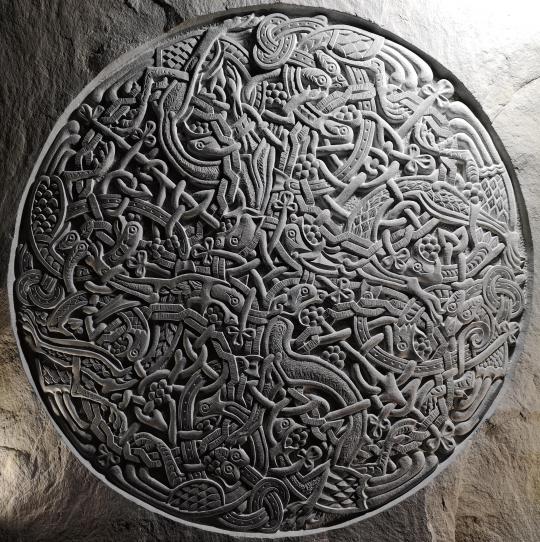
New to Tumblr, going to start dumping some of the stone carving that I've done here.
This big slate carving is based on a design from the Book of Kells, all hand carved with hammer and chisels.
#sculpture#stone carving#carving#art#traditional art#celtic#celtic art#book of kells#irish art#scottish artist#scottish#handcarved#hand made#stone sculpture
23K notes
·
View notes
Text

A piece I made, trying a new style:)
#my art#watercolor#alcohol ink#micron pen#ruralcore#woods#mystery#secret#just boys being boys#lol#celtic stone#snake
0 notes
Text


Continuing my experiments with river pebbles - a green jasper kelpie, first attempt to make an ornament
#stone carving#kelpie#horses#celtic folklore#mythology#Celtic ornament#miniature#my art#pebble art#pebbles#Jasper#river#lapidary#green#scottish folklore#beach combing
482 notes
·
View notes
Text
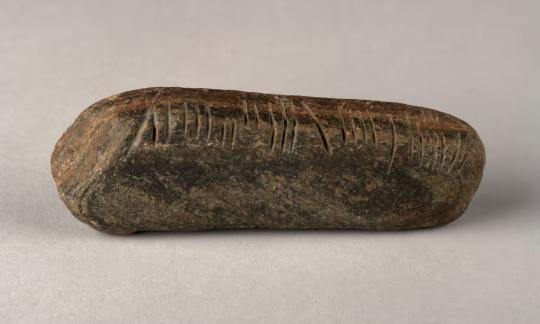
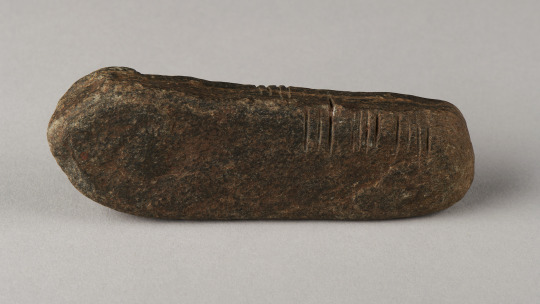
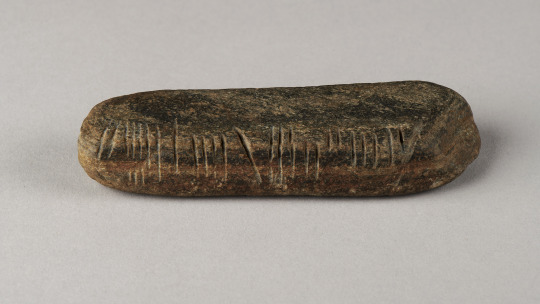
Stone With 1,600-Year-Old Irish Inscription Found in English Garden
A geography teacher, Graham Senior, stumbled across a rock with mysterious incisions while tidying his overgrown garden in Coventry, England. The discovery of a small stone carved with an early form of Celtic script has caused excitement among archaeologists.
The rectangular sandstone rock was found by Graham Senior in Coventry during lockdown in 2020 while he was weeding, but its true value was only recently understood.
The 11-centimeter-long and 139-gram rectangular sandstone rock had cryptic inscriptions on it that suggested a history spanning over 1,600 years, all written in the mysterious Ogham alphabet.
Ogham is an early medieval alphabet used to write the Archaic Irish language from the 4th to the 6th century and Old Irish from the 6th to the 9th century. It is usually found carved on stones in Ireland, Wales, and western Britain. It was the first written language in Ireland. The majority of the 400 or so known inscriptions from the Archaic Irish period are family name pillars that were built to announce land ownership.
Ogham is an extremely unique writing system among all writing systems, with lines arranged in groups of one to five only. The stones provide insight into the Irish language before the use of the Latin insular script.
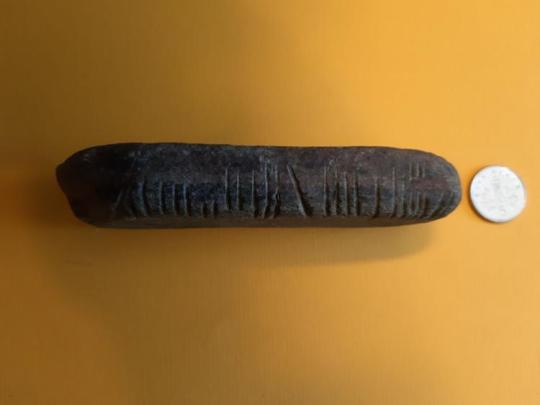
Finds liaison officer for the Birmingham Museums Trust, Teresa Gilmore, told RTÉ’s Morning Ireland that the discovery on an Ogham stone in the English midlands was a rare find.
“These finds do not turn up in the midlands. The bulk of Ogham inscriptions are found over in Ireland,” she said.
Professor Katherine Forsyth of Celtic Studies at the University of Glasgow conducted additional research that shed more light on the stone’s provenance. Her findings point to a period suggesting a timeframe ranging from the fifth to sixth centuries, with the possibility of an even earlier date in the fourth century.
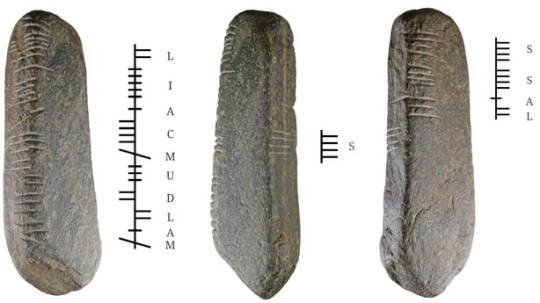
The stone is inscribed on three of its four sides. The inscription on the stone, “Maldumcail/S/ Lass,” puzzled researchers, with interpretations pointing towards a version of the personal name Mael Dumcail, but the meaning of the S and LASS is unclear. Given the usual purpose and significance of ogham stones, it may be a location reference.
Theories regarding the origins of the stone abound, with speculations ranging from migration patterns to the presence of early medieval monasteries in the region.
The rock will be displayed at the Herbert Art Gallery and Museum in Coventry, to which Senior has donated it permanently. It will feature in the forthcoming Collecting Coventry exhibition, which opens on 11 May.
By Oguz Kayra.
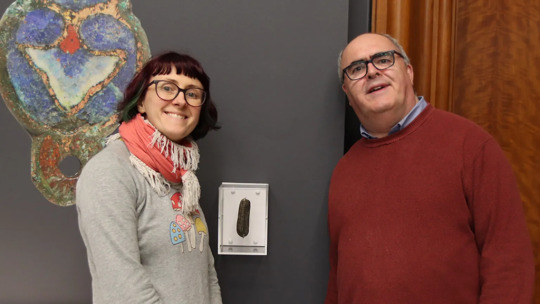
#Stone With 1600-Year-Old Irish Inscription Found in English Garden#Coventry England#Celtic script#sandstone rock had cryptic inscriptions#Ogham alphabet#ancient artifacts#archeology#archeolgst#history#history news#ancient history#ancient culture#ancient civilizations#celtic history#irish mythology#celtic art
667 notes
·
View notes
Text

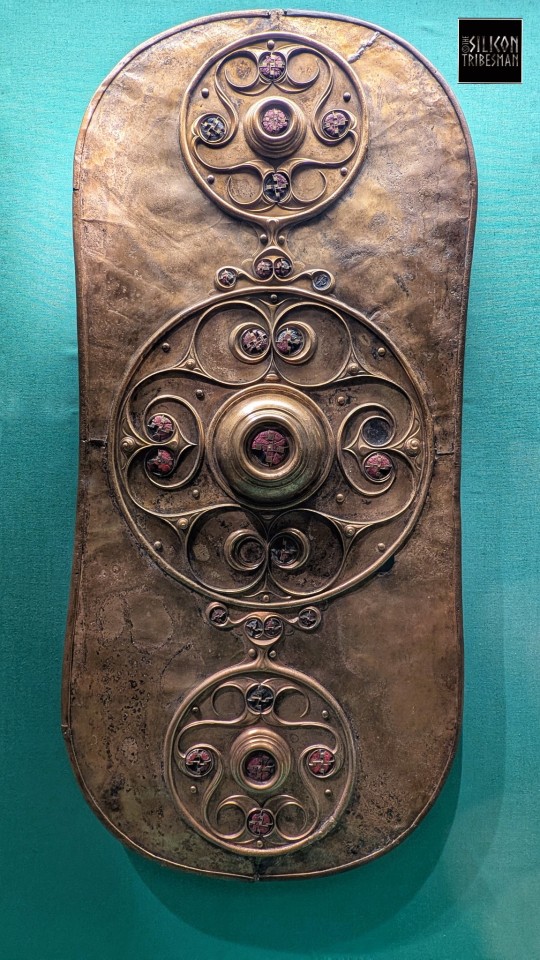
The Battersea Shield Found in the River Thames at Battersea Bridge, Around 350-50 BCE, The British Museum, London
The Battersea shield is one of the finest examples of La Tene, or Celtic art, from Britain. It was likely a votive offering to the Gods.
#ice age#bronze age#stone age#iron age#prehistoric#prehistory#mesolithic#neolithic#archaeology#shield#metalworking#designs#curvilinear#la tene#celtic#iron age london#ancient living#ancient cultures#votive
270 notes
·
View notes
Photo

80 notes
·
View notes
Text



Petróglifo de Pedra Furada, Touro, 27-12-24
#photography#photo#photographers on tumblr#aesthetic#aesthetics#nature#galiza#stone#prehistory#archaeology#prehistoric#forest#forestcore#ancient#farmland#Touro#Petróglifo#petroglyphs#Pena Furada#celtic#castrexos#celts#solpor#sunset#sunlight#komorebi#dusk#rural
52 notes
·
View notes
Text
"Hag Stones."
A Stone with a hole in it's center, or as the Celtics reffered to it as a "Hag Stone." A seeing stone.
Seen in popular media such as "Coraline." and "Spiderwick chronicles."

In Coraline it was used to find 'Lost' things, helping Coraline find the three missing ghost eyes to beat the other mothers game. But when first told Miss Spink and Forcible and two differing opinions. "It's good for BAD things." > April "It's good for LOST thing." > Miriume.
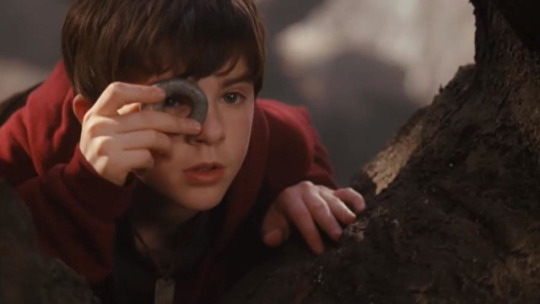
"In Spiderwick chronicles, it was a tool used to help a human see Fearies. Because only people with the sight or allowed to see the Fea can see them while most of the time they remain hidden. Only a "Seeing stone." Can help someone see the Fea clearly.

But thats in Fictional Media, what about real Hag Stones and their superstitions in real life?

"Celtic in origin. Referred as Hag Stones. Also known as Holey Stones or Witch Stones, are stones that have naturally occurring holes and usually found near oceans or other bodies of water. They are said to be powerful protection tailismans and when worn or carried they protect the bearer from curses, hexes negative spirits and harm. They have also been used to prevent nightmares, being strung on a bedpost or placed underneath pillows. It is also believed that if you peer through the hole of the stone that you can see the Fae Folk and otherworldly entities. If one broke, it is thought to have used its power to protect life.
*With that last addition, it makes sense on why this was used in media such as Spiderwick Chronicles and Coraline from it's tie to the Fea and other supernatural entities.
#HAG STONE#Hag stones#wicca#BOS#Page#MEDIA#Coraline#spiderwick chronicles#WICCA#Witchblr#witches of tumblr#witch community#beginner witch#witchcraft#pagan witch#celtic witch
362 notes
·
View notes
Note
can we get soft john and gale
sweet boysss. young vets wise when john is doin' really good with his sobriety and they've just had their Big wedding and life is actually going really good they're so soft with each other. like giddy newlyweds even though they've been married on paper for over a year at that point. road trip down to a nice lil beach town in south carolina after the wedding and are so ridiculously soft and lovey and sweet and it's just. really nice. john takes sooo many pics of gale, makes him stop at all the state signs to take photos and gale indulges him on it happily because seeing him so relaxed and happy makes him over the moon.
they already had rings but got new, nicer ones for the wedding as a Fresh Start thing. are always messing with them on each other fingers with they're holding hands. and john loves feelin' the metal of gale's ring against his skin when they're in bed. if u forgot john is a bottom in yv au yayyy.
#young vets au#buck x bucky#clegan#in my mind gale gets john a Celtic eternity knot ring#and john's for gale is something w/ both of their birth stones#and they both have them engraved on the inside
22 notes
·
View notes
Text
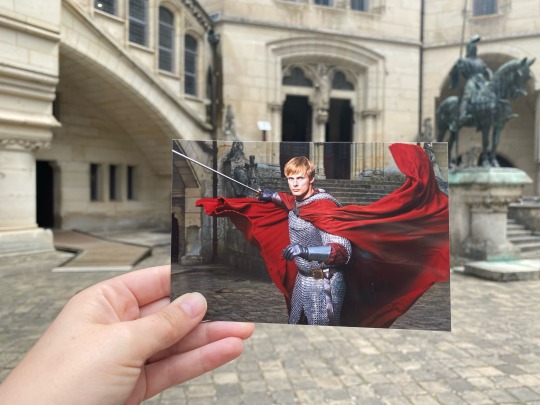
King Arthur in all his finery 👑🏰🗡️
(Please give credit if you repost ❤️)
#merlin fandom#merlin#magician#colin morgan#merlin bbc#katie mcgrath#merlin and arthur#angel coulby#bradley james#King Arthur#arthur pendragon#bbc#pendragon#Celtic#myth#legend#arthurian#arthurian legend#Excalibur#sword in the stone
176 notes
·
View notes
Text

Slate letter P from the Book of Kells.
#celtic art#carving#sculpture#stone carving#art#traditional art#celtic#celtic mythology#book of kells#irish#scottish#letter p#stone sculpture
312 notes
·
View notes
Text

Standing Stones.
32 notes
·
View notes
Text
The Turoe Stone
The Turoe Stone sculpture is a masterpiece of Irish Iron Age art and normally stands in the village of Bullaun near Loughrea, Co Galway. It had been moved in the 1850s from its original location near the Rath of Feerwore, an Iron Age ring-fort structure, at nearby Kiltullagh. The stone is currently off site and in the hands of the Office of Public Works for essential remedial work and unavailable…
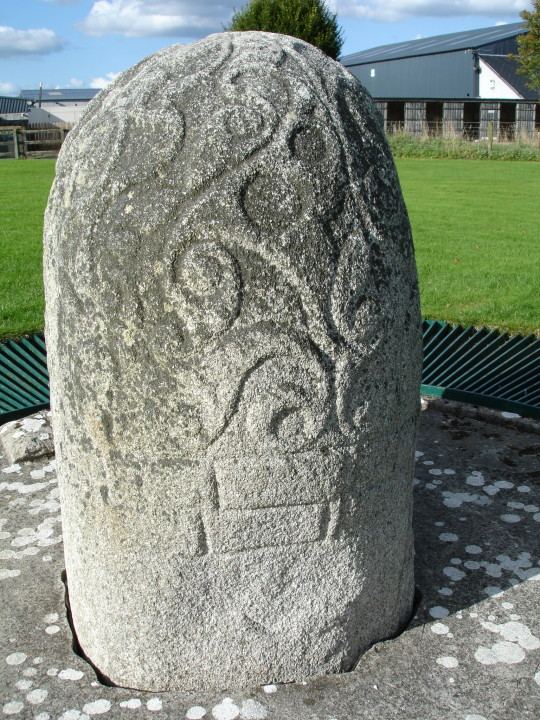
View On WordPress
#Ancient Celts#Archeologists#Bullaun#Celtic Art#Cloch an Tuair Rua#Co. Galway#France#Greece#Ireland#Iron Age#La Téne#Legend of the Celtic Stone#Loughrea#Newgrange#Sculpture#The Stone of the Red Pasture#The Turoe StoneEdit "The Turoe Stone"
27 notes
·
View notes
Text

Early Medieval Mudstone Carved Plaque from Dunadd, Kilmartin Museum, Kilmartin Glen, Argyll, Scotland
A plaque of mudstone incised with images of deer, eagles, and complex knotwork interlace based on the shape of the cross. It is perforated near the top, with wear suggesting it was suspended on a cord for a long period of time. Its art style suggests a tenth-century date, and it is one of the latest artefacts from the site.
#celtic knot#knotwork#interlace#beast#symbols#ancient crafts#ancient cultures#ancient design#archaeology#stone carving#inscribed stone#animals#attempts#dunadd#relic#artefact#Argyll#Scotland
360 notes
·
View notes